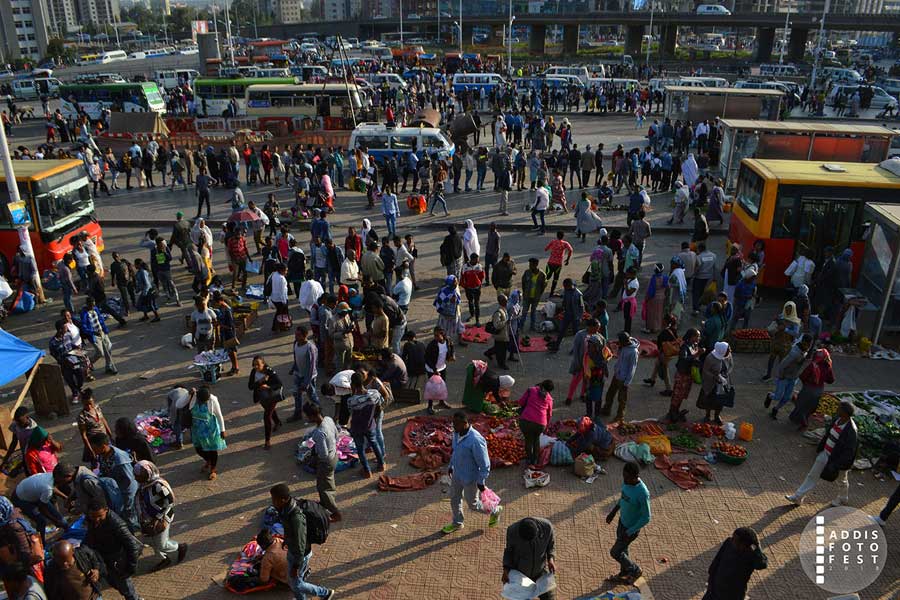
Advertorials | Mar 16,2022
Once while having coffee with friends, a woman and man, at a Tele Bar located near Gambia Street, the topic switched to a cheering natter involving meat eateries.
The man started to chatter about how, week in and week out, he goes to a livestock market to pick a sheep. He never allows his guard down in the culling, skinning, eviscerating and cutting. He almost wholly consumes it alone as well.
The woman went on about how she was amazed by the sight of a fattened ox accompanied by six or more people, like a bride, ceremoniously led to slaughter. She recounted in awe how she accompanied them in her vehicle for a long while, stopping when the ox got tired and how it hardly moved without assistance.
As the thought of meat watered their mouths, they brought up the idea of eating tire siga, a raw meat delicacy. We went to Abuare, in the direction of Balderas, and turned right into a green gated compound. Only vehicles looked welcome, and no other food was served besidetire siga.
No one orders in kilos. It is just lunch that we order. For 50 Br a pile of ribs, six individual portions. Though not fit as my friends, I joined the fight. As we were devouring and washing our throats with a sparkling yellow tej, honey wine, the woman started to complain that the meat was from a fattened, and then to its end, a bit underfed ox.
The man for his part said the one they - the two - had together a month or so ago, at Dukem, was the best. They had gone there only for the sake of eating meat. The woman then started to discuss how out of this world the meat she had at a wedding some months back was. I said, for my part, I have never seen anything like the meat we have just had. They looked at me with surprise.
There is a ritual to feasts, indeed to the traditional way of eating raw meat delicacies. A man who calls his kin to a feast does not do so to save them from starving. They all have food in their own homes. When we gather together in the moonlit village ground, it is not because of the moon. Everyone can see it in their compound. We come together because it is good for kin to do so, Chinua Achebe, the famed Nigerian novelist, once said.
It sums up the spirit of a tire sigafeast around a table in Ethiopia among friends and family.
Yidnekachew Tessema - a built to last national icon, plateful in every tier of responsibility the game names, one of the most travelled people one can imagine - said that his favourite “dish” was raw meat, though in the old days he was fond of doro wator spiced chicken. The cocktail circuit was certainly not for the tough kid from Arada, as he told Gedamu Abrha, in his 1969 colourful interview.
Tired of the raw chuck steak myself, I used to eat dishes made of tenderloin at an Italian restaurant close to my office.
Having the “aristocrat” of steaks there with its unique mushroom sauce and mashed potatoes as its side was aura equivalent to the famous bon mot, “my idea of heaven is eating paté de foie gras to the sound of trumpets.”
The tire sigaeateries of today could be said to be manifested in the 19th century's Marie-Antoine Carême.
“The king of cooks and the cook of kings,” as he was called. He was one of 25 children from one of the poorest families in France. In his teens, he was accepted as an apprentice chef and after much study under many masters went on to found la grande cuisine française.
His creations reflected his considerable artistic abilities, his pastries often looking more like sculpture than food. The art is now manifested first and foremost by the village qurt sigaeateries - popular with many customers.
Unfortunately, the market's potential is undercut by a myriad of problems. The East African livestock trade is characterised by illicit (informal) trade between neighbouring countries, seriously affecting Ethiopia, according to the New Partnership for Africa’s Development (NEPAD). In the 2000s, an estimated 325,800 cattle, 300,000 skins and 150,000 hides of animals were estimated to slip out of Ethiopia every year.
Diseases, nutrition, traditional husbandry and a rough market are the main hold-ups. On the former point, high microbial load in abattoir and butcher shops characterised by low meat quality make it a potential source of food-borne infection caused by E. coli, S. aureus and Salmonella, as well as food spoilage, as have been shown in a study conducted by Abebe Bersisa, et al.
It is also the case that as butchers buy animals from traders and have them transported to nearby abattoirs, they complain of high taxation, as they do not get receipts from cattle traders for formally keeping records of their expenses, according to a BCaD Consulting 2015 study.
The already minimal per capita consumption of meat by Ethiopians - at nine kilograms just one-eighth the OECD average - is stifled due to escalating meat retail prices. Much of the price is captured along the value chain by brokers rather than by those adding value.
With the current business model of sourcing animals from non-commercial breeders through the interplay of multiple brokers, it is hardly possible to process high-quality meat at a competitive price for the international market and lower the cost of meat at domestic markets.
Concerted and multiple intervention strategies to unleash the sector’s potential is important. Perhaps some lessons can be taken from the thriving village of Carêmes of Ethiopia.
PUBLISHED ON
Aug 29,2020 [ VOL
21 , NO
1061]


Advertorials | Mar 16,2022

Verbatim | May 16,2020

Radar | Sep 14,2019

View From Arada | Jul 24,2021

My Opinion | Mar 23,2024

Films Review | Jun 22,2019

Election 2021 coverage | Feb 18,2020

View From Arada | Oct 12,2024

Advertorials | May 27,2024

Exclusive Interviews | Dec 23,2023

Dec 22 , 2024 . By TIZITA SHEWAFERAW
Charged with transforming colossal state-owned enterprises into modern and competitiv...

Aug 18 , 2024 . By AKSAH ITALO
Although predictable Yonas Zerihun's job in the ride-hailing service is not immune to...

Jul 28 , 2024 . By TIZITA SHEWAFERAW
Unhabitual, perhaps too many, Samuel Gebreyohannes, 38, used to occasionally enjoy a couple of beers at breakfast. However, he recently swit...

Jul 13 , 2024 . By AKSAH ITALO
Investors who rely on tractors, trucks, and field vehicles for commuting, transporting commodities, and f...

Oct 25 , 2025
The regulatory machinery is on overdrive. In only two years, no fewer than 35 new pro...

Oct 18 , 2025
The political establishment, notably the ruling party and its top brass, has become p...

Oct 11 , 2025
Ladislas Farago, a roving Associated Press (AP) correspondent, arrived in Ethiopia in...

Oct 4 , 2025
Eyob Tekalegn (PhD) had been in the Governor's chair for only weeks when, on Septembe...